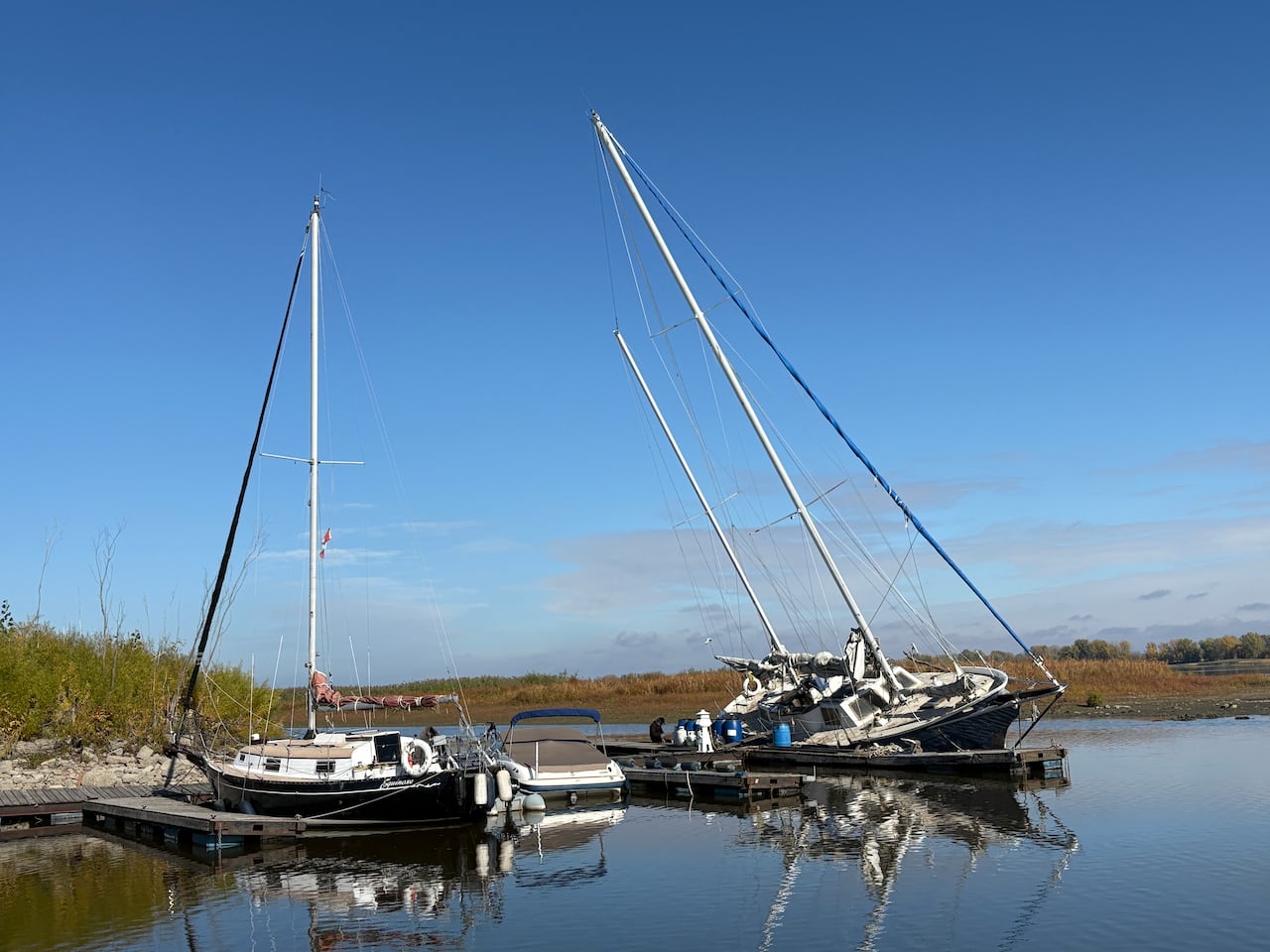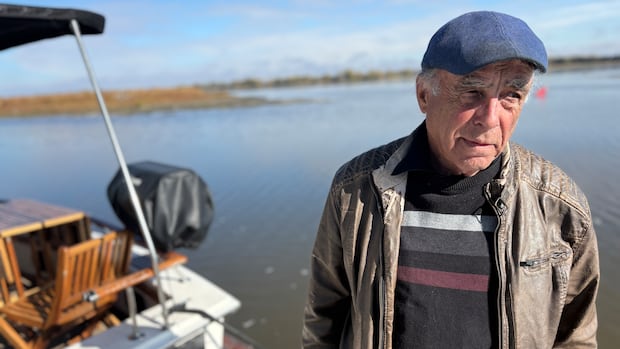The International Lake Ontario–St. Lawrence River Board says it will temporarily increase outflows from Lake Ontario this week to help recreational boaters on Lac Saint-Louis, southwest of Montreal, remove their watercraft for the season.
This comes after a particularly dry summer and fall has dried up many marinas along the St. Lawrence River, like the Marina de la Rive-Nord in Repentigny, Que., where boats and docks are normally floating.
Instead, sections of the riverbed are exposed, the mud drying and cracking in places. Water levels are nearly two metres lower than usual, according to the marina’s owner, Yvon Vannini.
The last time he remembers seeing the water levels this low was 1989, he told CBC News, showing where several boats were resting on the riverbed. That makes it difficult to move the boats without damaging them.
WATCH | Low water levels causing headaches:
How the lowest water levels in 13 years is causing problems in the St. Lawrence River
With the Lake Ontario and St. Lawrence River regions experiencing a moderate to severe drought, boaters and marinas are struggling to manage vessels.
“Lots of people are worried,” he said, citing the rapidly approaching winter. “The temperature will change and when it’s cold … we’re unable to move the boat in the ice.”
Vannini said the situation at his marina isn’t as bad as others.
The International Lake Ontario–St. Lawrence River Board, which oversees Lake Ontario’s outflow, plans to raise the flow by up to 500 cubic metres per second beginning on Friday morning and continuing until Saturday evening.
 Sections of the riverbed at the Marina de la Rive-Nord in Repentigny, Que., are exposed, the mud drying and cracking in places. (Gloria Henriquez/CBC)
Sections of the riverbed at the Marina de la Rive-Nord in Repentigny, Que., are exposed, the mud drying and cracking in places. (Gloria Henriquez/CBC)
The move is expected to temporarily lift water levels on Lac Saint-Louis by about 15 centimetres — enough to make boat haul-outs easier, the board says in a news release.
“If we wait later in the season, we hope to get more precipitation. Unfortunately, we haven’t had that rainfall, so this may be the last chance to do this kind of activity,” said Jérôme Marty, head of the International Association for Great Lakes Research.
The board says the change is authorized under its minor deviation authority, which allows short-term adjustments to the outflow plan at the Moses-Saunders Dam, located between Massena, N.Y. and Cornwall, Ont., when there are no significant adverse effects to other interests.
The temporary flow increase is not expected to meaningfully affect Lake Ontario levels, though water levels on Lake St. Lawrence — a man-made widening of the river near the Moses-Saunders Dam — will drop by about 20 to 30 centimetres during the operation.
 The Marina de la Rive-Nord in Repentigny, Que., is dealing with low water levels along the St. Lawrence River, grounding some boats. (Gloria Henriquez/CBC)
The Marina de la Rive-Nord in Repentigny, Que., is dealing with low water levels along the St. Lawrence River, grounding some boats. (Gloria Henriquez/CBC)
According to the Canadian Drought Monitor, areas around Lake Ontario and the St. Lawrence River are experiencing moderate to severe drought conditions. The board says it will continue to monitor forecasts and refine the deviation plan in the weeks ahead.
As for Vannini, he plans to be at his marina bright and early on Oct. 18 to see if the operation makes a difference.
But, he added, “I don’t really believe that’s going to do something.”

